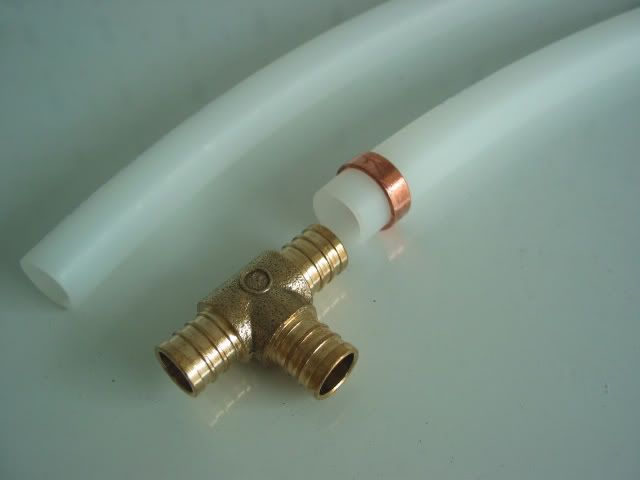While inspecting a home built in 1999 the supply lines in the attic were a type of translucent-white plastic. Connections were made with the same type of copper found with poly piping And some were leaking. What type is this and is it accepted. All homes in this development have this.
Don,
Do you have any pictures?
This is the only thing I could find (on a quick search). Only looks like they could be used for cold water:
SX 720. Translucent white silane cross-linked polyethylene pipe. For cold water and hot water use up to 85°C. **
[FONT=Arial][size=2]Supplier: **AEI Compounds Ltd
From your description, it doesnt sound like a good material to be using. Looks like a lawsuit in the making.
[/size][/FONT]
Dale,
I have never seen clear Pex pipe. It is usually blue and red.
They make in different colors Bill.
The older PEX was clear.
Thanks guys it must be pex I had never seen it clear either, I guess what makes me concerned is that there were water stains traveling a straight line on the ceiling in a couple of rooms but in the attic I did not see any leaks but the fittings concerned me.
That’s it,is there any problems with these fittings?
I have never seen a leak at a fitting.
But since their is fittings and humans connect them, certainly there will be leaks…![]()
On occasion, these fittings will leak. Usually if a fitting is bad, the contractor will know when he is installing it. On occasion, the fittings will leak for a couple of days on initial use, most of the time they seal themselves especially the hot water ones.
If the supply lines are for potable water, make sure they are stamped for potable water. There is Aquapex for both drinking water and heating water. The Pex for heat is not considered safe for potable water.
Look for the marks made by the crimper on the ring. It is very easy to miss crimping one when installing. Unless the preassure is very high, an uncrimped joint will not always blow apart but will often just show a slow drip.
If you can, pick up a “go - no go” guage and test the crimp
Paul Hisnperger
Hinsperger Inspection Servces
Orangeville Ontario
www.hinsperger.com
